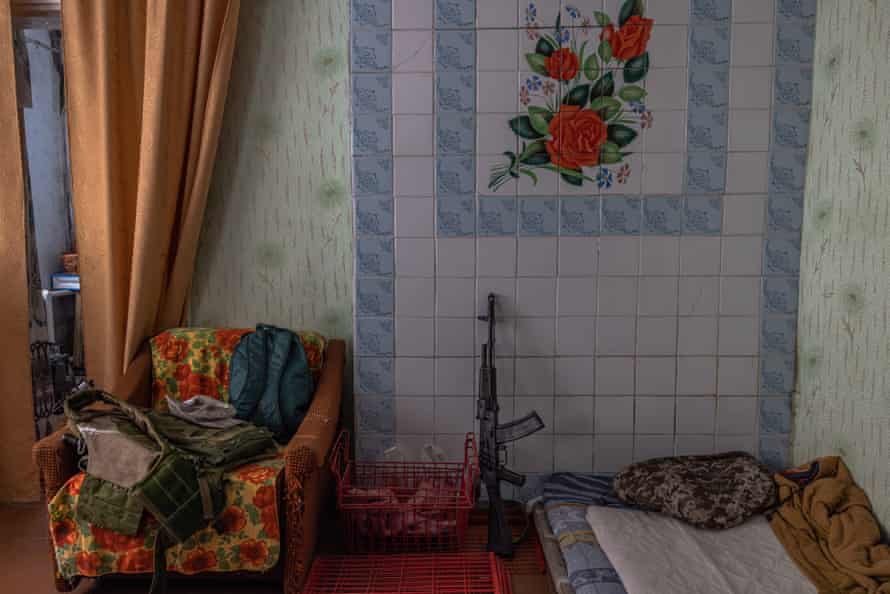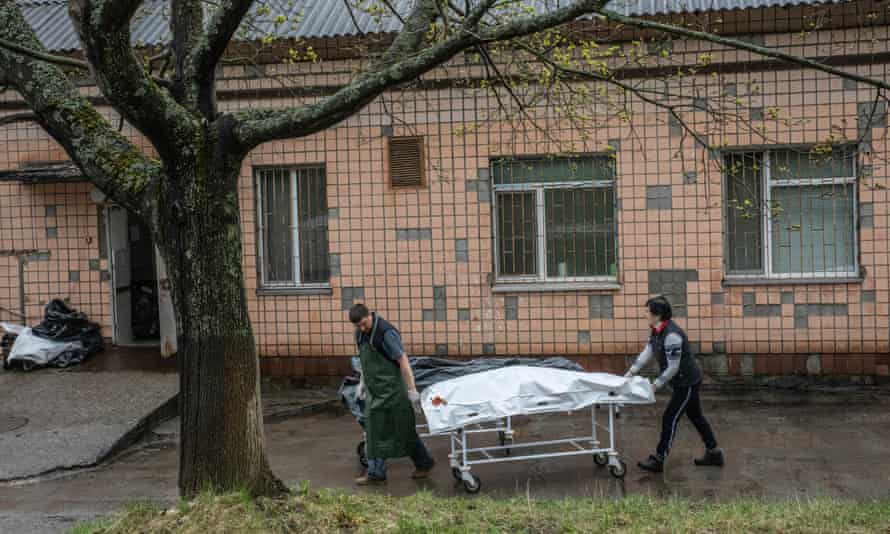Every week we wrap up the must-reads from our coverage of the Ukraine war, from news and features to analysis, visual guides and opinion.
War threatens to enter dangerous new phase
Analysis by Julian Borger explained how a series of mysterious explosions in Moldova has raised the threat of Russia’s war in Ukraine spilling over into new territory, with unpredictable consequences.
Separatist authorities in the Moscow-backed region of Transnistria have blamed the incidents on Ukrainian infiltrators, while the Kyiv government alleged they were false-flag attacks designed to provide a pretext for an infusion of Russian troops, just as similar blasts in the Donbas preceded the 24 February Russian invasion of Ukraine.
A Russian move into Transnistria would pose an imminent threat to the sovereignty of Moldova, which, like Ukraine, has shown increasing interest in joining Nato.
On Thursday, Moldova’s deputy prime minister, Nicu Popescu, said the attacks represented “a very dangerous new moment in the history of our region”. One of Europe’s poorest countries, Moldova is grappling with a large influx of refugees and the economic fallout of the war, which has stopped nearly 15% of its exports.
With the start of this new phase in the war, a layer is being stripped away from the buffer that has thus far kept Nato and Russia from coming into direct, hostile contact, during the cold war and since, Borger writes. And if the ominous explosions in Transnistria are auguries of a new Putin gambit, Moldova could find itself to be the next proving ground where this dangerous new world makes itself felt.

Russia turns off the gas
Dan Boffey in Brussels, Philip Olterman in Berlin and Rob Davies in London wrote about the consequences for Europe after Russia halted gas supplies to two EU countries and threatened others, in a move condemned by European leaders as blackmail.
The move, described by Poland’s prime minister, Mateusz Morawiecki, as a “direct attack” on his country, was justified by the Kremlin as a response to a failure of the two countries to comply with demands for payments to be made in roubles.
It has led, however, to a dangerous standoff as Ursula von der Leyen, the president of the European Commission, said any EU country giving in to Russia by paying for gas in roubles would be in breach of the bloc’s sanctions regime, with which the UK and others have acted in lockstep.
Craig Erlam, a senior market analyst for the UK and Europe at the foreign exchange company Oanda, said: “This may be a warning sign to others in the hope that they don’t follow suit, but if they do, the standoff could play havoc with energy prices. With the Kremlin putting itself in a position where it must apply the same punishment to all if they don’t comply, Europe may find itself without Russian gas or looking weak.”
Hungary has said it is happy to pay in roubles and, according to reports, three of Europe’s biggest gas companies – Germany’s Uniper, Italy’s Eni and Austria’s OMV – are also examining ways to comply with Putin’s decree.
In a separate piece of analysis, Rob Davies asks: how worried should Europe be?

On the ground in ‘Fortress Zaporizhzhia’
Isobel Koshiw visited Zaporizhzhia, the only large city in south-east Ukraine under Ukrainian control. It has become a destination for the hundreds of thousands of people who fled Russian occupation, but with 70% of the wider region under Russian military control, there are fears that Moscow’s forces will attempt to take it.
As preparations for the arrival of the war get under way, life in the city is surprisingly normal – even busy – for wartime Ukraine.
“You can see for yourself people are out, going to work – the city is prepared but it won’t come to that,” said Ivan Ariefiev, the press secretary of the Zaporizhzhia regional military administration, at one of a series of war-related training courses being offered to the city’s teachers and journalists. Attendees, who are then expected to train the wider community, were taught how to load a gun, administer first aid and do a basic medical evaluation.

Metal darts out to kill
Fléchettes are rarely used in modern warfare. Small, metal and sharp like a dart, thousands can be stored inside each shell. Once fired, the shell will detonate on a timer, spreading the tiny arrows far and wide.
The weapon was used in the first world war – dropped from airplanes to pierce the helmets of enemy infantry. Now, they are being removed from the heads and chests of civilians in Ukraine.
Lorenzo Tondo reported on the discovery of the tiny metal arrows in bodies of men and women in mass graves, allegedly killed during the Russian occupation of Bucha, Ukraine.
“We found several really thin, nail-like objects in the bodies of men and women and so did others of my colleagues in the region,” Vladyslav Pirovskyi, a Ukrainian forensic doctor, told the Guardian. “It is very hard to find those in the body, they are too thin. The majority of these bodies come from the Bucha-Irpin region.”
Russian forces captured Bucha, 30km north-west of Kyiv, after ferocious fighting following Russia’s invasion in February. Towards the end of March, mass graves containing the bodies of hundreds of people who had apparently been massacred came to light.

Mission creep?
As defence and security editor Dan Sabbagh explains, the west’s war aims are expanding. On Monday, Lloyd Austin, the US defence secretary, said the west’s goal was to “weaken Russia” to the point where it could no longer threaten its neighbours. A day later, the British junior defence minister James Heappey said it would be “completely legitimate” for Ukraine to use western weapons to strike inside Russia. On Wednesday, western officials said they would like to see Ukraine restored to the boundaries existing before 24 February – the start of the Russian invasion – “as a minimum”.
With Ukraine unable to achieve that objective on its own, the question will become how much more Britain and other Nato members are prepared to commit.
On Wednesday, the British foreign secretary, Liz Truss, appeared very committed, adopting in her speech the most uncompromising of approaches to a final peace settlement: endorsing the measures above but also reparations – a payment to Ukraine for the damage Moscow had inflicted – in an echo of the principles followed by allied forces against Germany in 1919.
Discussions on how to define failure in any peace settlement are at an early stage among the cell of diplomats from “the Quad” – the US, UK, France and Germany – discussing the issue.
The discussions will evolve as the battlefield evolves.
Our visual guide to the invasion is updated regularly and can be found here.


